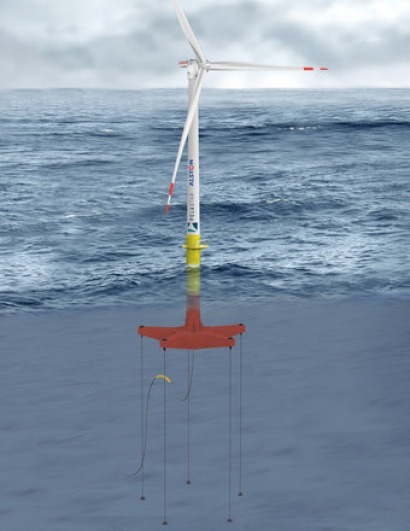
A naval architect and engineer from Glosten Associates, the company behind the PelaStar floating offshore wind turbine demonstrator due to be deployed off the south coast of England in 2015, has said that a field of wind turbines floating on Lake Michigan isn’t that far off.
Marine engineer Charles Nordstrom told a crowd of aroud 45 people in Muskegon last week that at the very least the technology is nearly ready although there is still no state mechanism to regulate such a project.
Last year Glosten engaged with Grand Valley State University’s Michigan Alternative and Renewable Energy Center and Michigan Technological University in a partnership for a federal grant to test the technology on the Great Lakes. The US Department of Energy (DOE) unfortunately did not fund the grant but Glosten is now completing engineering work for the demonstration project off the coast of England and Nordstrom believes, with regard to Lake Michigan, that the technology would work best where the lake is more than 160 feet deep. This compares to conventional turbines with solid-foundations on the sea bottom which become unfeasible at depths less than 160 feet.
The depth of the water at the point of deployment in Lake Michigan would mean that the turbines would be virtually invisible from the shore.
“Pretty much can’t see these machines from the shoreline at 15 miles from shore” Mr Nordstrom told his audience. “It’s cheaper and deeper” he added. The wind is also stronger at such a distance. According to MAREC Director Arn Boezaart deep water deployment means that wind turbines could be installed on Lake Michigan without any observation from shore-line properties or public beaches.
PelaStar is a tension leg platform (TLP) system. Glosten has assembled a team of experts to develop the south of England deployment which is scheduled for completion in 2015 with a contract awarded by the Energy Technologies Institute (ETI)
Further information:

